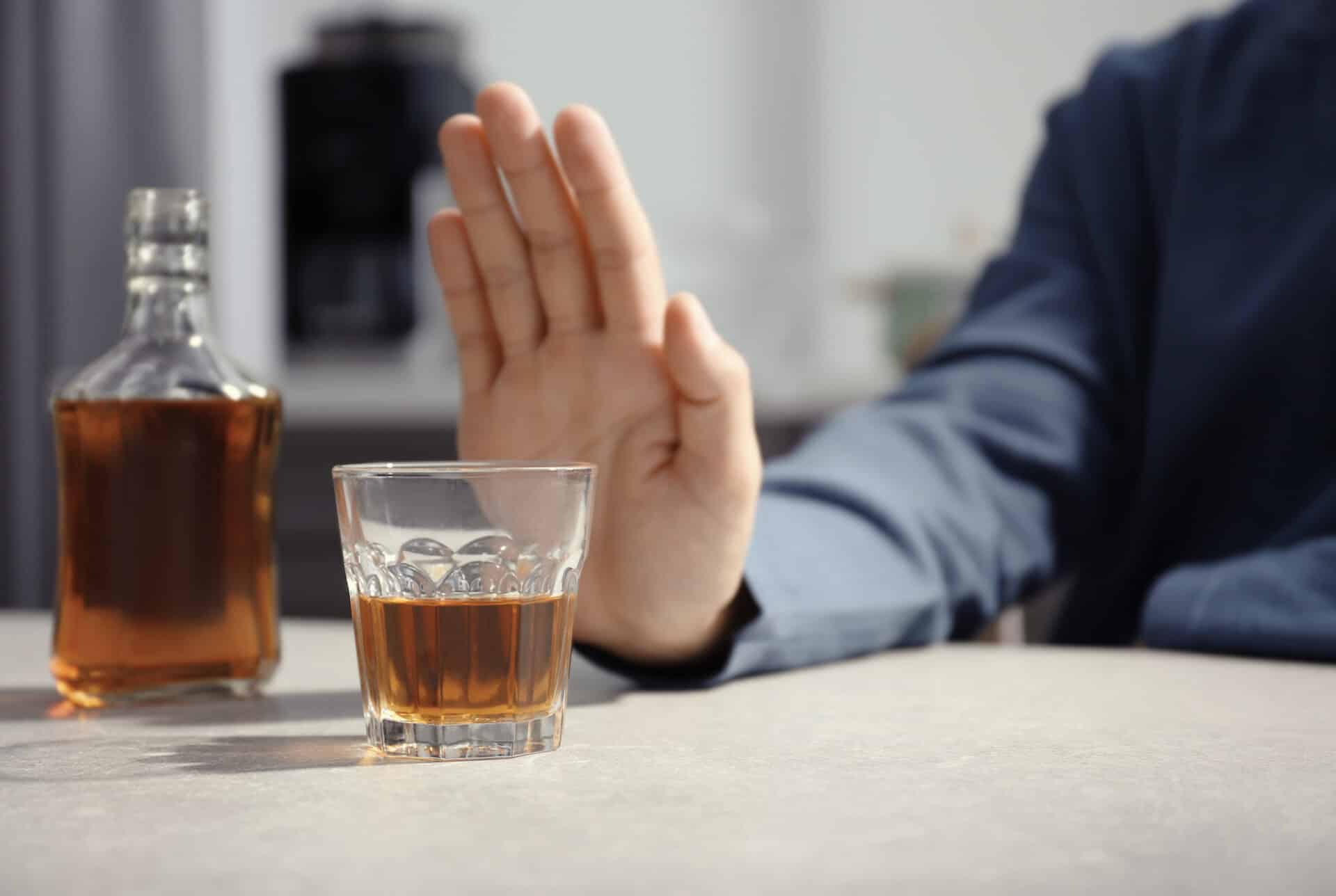
You might be aware that binge drinking represents a serious public health concern. You might also be aware that binge drinking is common among young adults, leading some to become dependent on alcohol and others to place themselves in unsafe or risky situations. What you might not be aware of is that there are a variety of outpatient alcohol rehab options available for binge drinking. Getting treatment for a problem with binge drinking can allow an individual to overcome their problematic alcohol consumption before it gets worse. In order to find the right binge drinking treatment for you or your loved one, you should have a firm grasp on what treatment options are available to you. In this article, we’ll explore the various treatments that can help with binge drinking. We’ll weigh the benefits of inpatient versus outpatient treatment for binge drinking, and outline some of the approaches to treatment that are available. Along the way, we’ll also discuss what binge drinking is and what separates binge drinking from alcohol use disorder (AUD). This information will provide important context for understanding why an individual would get treatment for binge drinking, even when they have not been diagnosed with AUD.
What is Binge Drinking?
At a basic level, the fact about binge drinking is that it can be understood to be the consumption of a large amount of alcohol over a short period of time. Officially, there are two different definitions of binge drinking. Both definitions have a great deal of overlap, but there are distinctions. The National Institute on Alcohol Abuse and Alcoholism (NIAAA) states that binge drinking involves the consumption of enough alcohol to produce a blood alcohol concentration (BAC) of 0.08 g/dL. According to the NIAAA, for the average adult male, this involves the consumption of 5 or more alcoholic drinks within a 2 hour time period. During that same time period, the average adult woman would need to drink only 4 alcoholic beverages to achieve a BAC of 0.08 g/dL. The second definition of binge drinking is provided by the Substance Abuse and Mental Health Services Administration (SAMHSA). SAMHSA utilizes the same thresholds as the NIAAA definition, namely 5 drinks for men and 4 drinks for women in a single drinking session, yet stipulates that it must have occurred at least once in the past month.
Who is Binge Drinking?
One challenge in combating binge drinking is that it is most popular for individuals between the ages of 18-35. This problematic alcohol consumption during young adulthood can lead to alcohol abuse over the course of a lifetime, yet is also occurring during a period of time where young adults are beginning to exercise agency over their own lives for the first time. While nearly half of all binge drinks are consumed by people between 18 and 34 years of age, the other half of binge drinks are consumed by people over 35 years of age. This disrupts the common misconception that binge drinking is only popular with younger adults. While a greater percentage of young adults binge drink, a significant number of older adults in the United States binge drink as well. Binge drinking is more common in males than females in all age groups. It should also be noted that signs of binge drinking are more common at income levels greater than $75,000 per year, and with college graduates.
Is Binge Drinking Different From Alcoholism?
Though the two are often conflated, binge drinking should be thought of as distinct from alcoholism. This discussion gets a little confusing because an alcoholic may be a binge drinker, but a binge drinker may not be an alcoholic. The fundamental difference between binge drinking and alcoholism is that alcohol use disorder (AUD) is a medically diagnosed condition. Binge drinking is not a medical condition but is rather a problematic form of alcohol consumption. When making a diagnosis of AUD, the broad pattern of alcohol abuse and the long-term effects on the life of the alcoholic are taken into consideration. The negative impact of their alcohol use on their employment, family life, and health are all factors. Other factors include whether an individual has experienced withdrawal symptoms from alcohol, whether they have cravings for alcohol, or whether they pass up on other activities so that they can drink.
What are the Negative Impacts of Binge Drinking?
If binge drinking isn’t alcoholism, do you even need to get treatment for it? This is a common question. Given that a binge drinker doesn’t always qualify for a diagnosis of AUD, it is reasonable to question why someone would get help for the condition in the first place. The simple answer is that binge drinking can lead to a variety of negative outcomes in the life of the binge drinker. These negative impacts can affect their physical health, such as from car accidents or unintentional falls resulting from their heavy drinking, or mental health, such as from depression. Far from being harmless, binge drinking can be destructive and dangerous even while the binge drinker isn’t considered an alcoholic. Here are some of the most common negative impacts of binge drinking:
- Injury from falls or car crashes.
- Risky sexual behavior.
- Miscarriage, stillbirth, or fetal alcohol disorders.
- Failure to remember events (blacking out).
- Increased risk of contracting sexually transmitted diseases.
- Increased risk of certain types of cancer.
- Depression and suicidal thoughts.
- Loss of productivity at work or school.
- Alcohol dependence.
One thing to note is that although binge drinking doesn’t make an individual an alcoholic, this form of problematic alcohol consumption can lead to alcohol dependence down the road. Avoiding this outcome requires addressing problematic drinking patterns early on.
How is Binge Drinking Treated?
Although binge drinking is not the same as alcoholism, there can be no doubt that there are a variety of negative consequences associated with binge drinking. We’ve outlined a few of these in the preceding chapter, but there are many others as well. Binge drinking is highly risky behavior, and minimizing that risk sometimes requires seeking out the resources and professional help that can help an individual stop binge drinking. In order to get help for a binge drinking problem, you or your loved one will have to enter into a treatment program. There are a number of different criteria that you should look for in a treatment program, but at a basic level, you’ll want to find a treatment program that specializes in treating abuse and alcoholism. This will give you or your loved one the best chances for a successful, long-term recovery by giving access to the tools and resources that have been proven to help individuals who abuse alcohol. Broadly speaking, there are two different types of treatment programs that are commonly available. These are inpatient or residential treatment programs, and outpatient programs. Let’s take a look at each of these in closer detail to understand the differences between them.
Inpatient Treatment
Inpatient treatment programs are sometimes referred to as residential treatment. As the name would suggest, during a residential treatment program you’ll physically live in the facility for the duration of the program. Inpatient treatment programs last between 1-3 months, typically in 30-day increments. Residential treatment programs represent a large time commitment for patients, so understanding the scope of that commitment beforehand is a good idea. At the same time, residential treatment programs offer a high degree of structure and stability throughout the duration of your stay. This structure can be an important component of a successful recovery journey, in that healthy patterns of behavior can be created during your stay that will transition to life outside of the treatment program. Inpatient treatment programs most often begin with a medically-managed detox. Detox is the process of ridding your body of any remaining traces of alcohol. Detox from alcohol can be dangerous if an individual has developed a tolerance for alcohol and experiences withdrawal symptoms when they stop drinking. If you experience withdrawal symptoms when you stop drinking, you should strongly consider going through medically-managed detox. In a medically-managed detox setting, healthcare professionals can monitor your vital signs to ensure any complications are caught early while also minimizing your withdrawal symptoms through the use of medications. During inpatient treatment, patients will take part in counseling and therapy sessions that will dive deep into the roots of their problematic drinking behavior. The underlying issues that gave rise to their excessive drinking will be uncovered and addressed. Two popular counseling approaches are motivational interviewing and cognitive behavioral therapy. Cognitive behavioral therapy (CBT) specifically is a core component of many alcohol treatment programs, as it has been shown to be highly effective in addressing problematic drinking behavior.
Outpatient Treatment
Outpatient treatment programs offer more of a balance between life outside of the treatment facility and the treatment program itself than an inpatient treatment program does. Outpatient treatment programs are typically structured in a way that allows the individual in recovery to take part in the therapies, counseling sessions, and skills building courses that are the foundation of treatment programs but give them the flexibility to go home at night. While there may be more of a temptation to return to drinking during the course of an outpatient treatment program, the lesser degree of security is matched by greater flexibility. This makes outpatient treatment programs ideal for individuals that have work or family commitments that make a residential treatment program unrealistic. Some outpatient treatment programs may require the individual in recovery to go through an inpatient detox program before the outpatient treatment program begins. Detox isn’t always required, and for the treatment of binge drinking, it may not be necessary. During intake, an addiction specialist will guide you through the various treatment options available for you, and make targeted recommendations that will give you the best chances for a successful recovery. Throughout the course of an outpatient treatment program, you’ll take part in many of the same courses and counseling sessions that you would have access to in a residential treatment program. An advantage of outpatient treatment programs is that they have inherent flexibility, yet offer access to the same level of resources and care that a residential program offers. This makes them ideal for individuals that have the support network outside of the treatment facility, such as loved ones and family members, that can help them stay sober when they return home at the end of the night.
Closing Thoughts
Treatment options for binge drinking track closely to treatment options for alcohol use disorder. The two main options that exist are inpatient and outpatient treatment programs. Inpatient, or residential programs, offer the highest level of security by ensuring that access to alcohol is limited for the duration of your stay. Inpatient treatment programs offer greater flexibility, which makes them ideal for individuals that have obligations outside of treatment. There is not necessarily a single best treatment for binge drinking. The best treatment option for you is the one that will ensure that you stop drinking and stay sober for the long term. While binge drinking is not the same thing as alcoholism, binge drinking is an inherently risky behavior that can result in a number of negative outcomes in the life of the binge drinker. One of these is the risk of developing a dependence on alcohol. Avoiding these negative outcomes, including developing a dependence on alcohol, requires addressing problematic alcohol consumption early on. Although alcohol use disorder (AUD) is treatable, it can become more difficult to overcome the longer an individual abuses alcohol. Simply put, getting treatment when you recognize the problem will give you or your loved one the best chance for a successful recovery. Choosing the right treatment facility is an important consideration as well. You should choose a treatment facility that specializes in treating alcohol abuse. This will ensure that you or your loved one have access to the expertise and resources necessary to really address the underlying issues that gave rise to your binge drinking. To find out more about what treatment options are available for binge drinking, please contact Apex San Diego Recovery today. Sources
- https://www.cdc.gov/alcohol/fact-sheets/binge-drinking.htm
- https://www.niaaa.nih.gov/alcohol-health/overview-alcohol-consumption/moderate-binge-drinking
- https://misuse.ncbi.nlm.nih.gov/error/abuse.shtml
- Krieger, Heather, Chelsie M. Young, Amber M. Anthenien, and Clayton Neighbors. “The Epidemiology of Binge Drinking Among College-Age Individuals in the United States.” Alcohol Research: Current Reviews 39, no. 1 (January 2018): 23.
















